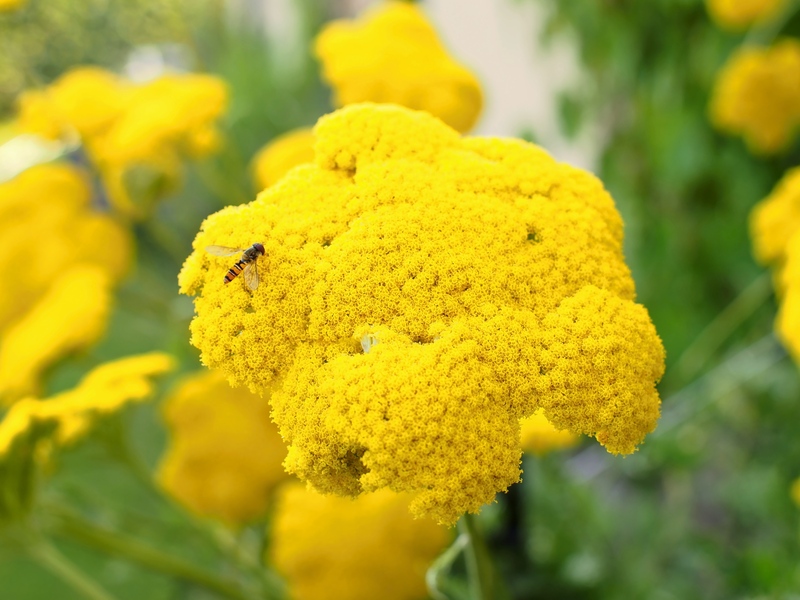Addressing Yellow Patch Lawn Disease
Posted on 05/06/2025
Addressing Yellow Patch Lawn Disease
Introduction to Yellow Patch Lawn Disease
Yellow Patch, also scientifically referred to as Rhizoctonia Cerealis, is a common fungal disease that affects cool-season grasses. It's particularly prevalent during colder months and becomes evident as grass patches turn yellow. This disease not only mars the aesthetic appeal of your lawn but also weakens the grass, making it susceptible to other issues.

Understanding the Causes of Yellow Patch
Recognizing the root causes of Yellow Patch is paramount for effectively addressing and preventing the disease. The primary causes are:
- **Cold and Wet Conditions**: Yellow Patch typically develops in cool, wet weather, where temperatures fluctuate between 35?F and 55?F.
- **Excessive Thatch**: Thatch provides a breeding ground for Rhizoctonia fungi.
- **Nutrient Imbalance**: An imbalance, particularly a lack of nitrogen, can exacerbate the disease.
- **Poor Air Circulation**: Grass in shaded or poorly ventilated areas is more susceptible.
Identifying Symptoms of Yellow Patch
To treat Yellow Patch effectively, early detection is crucial. Look for signs such as:
- **Circular Yellow Patches**: Noticeable patches that are yellowish in color, ranging from a few inches to several feet in diameter.
- **Weak Grass**: The grass in these patches often appears weak and can be easily pulled out.
- **Visible Fungal Mycelium**: In humid conditions, a white or gray web-like growth might be visible on affected areas.
Effective Treatment Methods
Once you've identified Yellow Patch, implement the following treatment strategies:
- **Fungicide Application**: Apply fungicides specifically designed to combat Rhizoctonia fungi. It's best to apply them in late fall or early spring when the disease is most active.
- **Improving Lawn Health**: Enhance lawn health by addressing excessive thatch, ensuring proper drainage, and correcting nutrient imbalances.
- **Avoid Excess Watering**: Overwatering can exacerbate fungal growth. Water your lawn deeply but infrequently.
Prevention Strategies
Preventing Yellow Patch involves maintaining optimal lawn conditions year-round:
- **Regular Aeration**: Aerate your lawn to reduce soil compaction and improve air circulation.
- **Balanced Fertilization**: Apply a balanced fertilizer to prevent nutrient deficiencies.
- **Proper Mowing Techniques**: Maintain an appropriate mowing height and avoid cutting more than one-third of the grass blade at a time.
Tips for Managing Yellow Patch
Here are some practical tips to keep your lawn healthy and resistant to Yellow Patch:
- **Check Soil pH**: Maintaining a pH level between 6 and 7 can make the soil less hospitable for fungi.
- **Use Resistant Grass Varieties**: Choose grass varieties that are resistant to fungal diseases.
- **Monitor Weather Conditions**: Be vigilant during wet, cold periods when the disease is most likely to develop.
Pros and Cons of Different Approaches
Fungicide Use
**Pros**:
- Quick and effective in killing the fungus.
- Easy to apply.
**Cons**:
- Can be harmful to the environment.
- May require multiple applications.
Improving Lawn Health
**Pros**:
- Sustainable and environmentally friendly.
- Improves overall lawn resilience.
**Cons**:
- Requires consistent effort and time.
- May not provide immediate results.
Maintaining Proper Lawn Care
**Pros**:
- Long-term solution to prevent recurrence.
- Enhances overall lawn appearance and health.
**Cons**:
- Requires regular monitoring and maintenance.
- Initial efforts might require a significant investment of time and resources.

Takeaways
- Yellow Patch is a common lawn disease caused by Rhizoctonia Cerealis, flourishing in cool, wet conditions.
- Early identification through symptoms like yellow patches and weak grass is crucial for effective treatment.
- Combination of fungicide application, improving lawn health, and following preventive measures is essential.
- Regular lawn care practices such as aeration, balanced fertilization, and proper mowing can prevent Yellow Patch.
Conclusion
Yellow Patch Lawn Disease can significantly impact the aesthetics and health of your lawn. By understanding its causes, identifying symptoms early, and employing a combination of effective treatments and preventive measures, you can manage and eradicate this disease. Regular lawn care and maintenance are paramount in preventing its recurrence, ensuring your lawn remains lush and healthy throughout the year.
а



